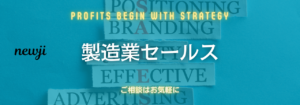- お役立ち記事
- Drawing process course to learn from the basics

Drawing process course to learn from the basics

目次
Introduction to Drawing
Drawing is an incredible skill that allows us to express ideas, emotions, and stories visually.
Whether you are creating fantastical landscapes or simple everyday objects, drawing is a fundamental art form that everyone can enjoy.
By understanding the basics, you can develop a strong foundation on which to build more complex skills.
This course will guide you through essential concepts and techniques needed to start drawing.
Understanding Drawing Tools
Pencils and Erasers
When starting your drawing journey, one of the primary tools you’ll encounter is the pencil.
Pencils come in varying degrees of hardness, marked with numbers and letters.
A softer pencil, labeled as B (e.g., 6B), is great for dark, expressive lines.
Conversely, an H pencil offers harder graphite for lighter, more refined strokes.
You should also have a good eraser, ideally a kneaded eraser, which can be shaped to erase tiny details without smudging.
Papers
Selecting the right paper is crucial for supporting your artistic objectives.
Different textures suit different styles; smooth paper is excellent for detailed work, while textured paper complements shading techniques.
Experimenting with paper weights and finishes helps you discover what suits your style best.
Basic Drawing Techniques
Lines and Shapes
Every drawing starts with basic shapes and lines.
Practicing drawing straight lines, circles, and squares helps improve hand control.
These shapes are the building blocks for more complex subjects.
Understanding how to combine these elements accurately is essential to construct a balanced composition.
Shading and Lighting
Shading brings dimension to your drawings.
Learning the technique begins by applying different pressure to your pencil to achieve various shades.
Understanding light sources is key, as it informs where shadows and highlights will fall on your objects.
Practicing with a simple sphere can illustrate how light behaves on a 3D object—this grounding knowledge will be applicable to more advanced work.
Gesture Drawing
Gesture drawing focuses on capturing the essence and movement of a subject.
It’s a helpful exercise to prevent stiffness in figures and to better express motion.
The idea is to draw quickly, with less concern for details, capturing the rhythm of a pose or action.
These quick sketches can act as a solid framework for more detailed work.
Developing Your Style
Experiment with Different Styles
Once you’ve got the basics down, start experimenting with different styles.
Try sketching cartoons, realism, abstract forms, or even anime art.
Exploring various styles broadens your skillset and helps you find a personal touch to your art.
Continuous Practice
Just like learning a musical instrument or a new language, regular practice is key in drawing.
Set aside some time daily to work on your sketches.
Over time, you’ll notice improvements not only in technique but also in creativity.
Seeking Inspiration
Study Work of Other Artists
One effective way to enhance your drawing skills is to study other artists’ work.
Look at how they use line, form, shading, and composition.
Keep an inspiration journal or mood board where you collect pieces that captivate you.
Draw From Life
Observing and sketching real objects enhances your ability to capture accurate forms and proportions.
It also trains your eye to detect subtle details in light and shadow.
Whether it’s a fruit bowl, a bustling street, or people at a café, drawing from life is an invaluable exercise to refine your skills.
Final Thoughts
Drawing is a rewarding journey that begins with mastering the basics.
By understanding tools, practicing techniques, and observing the world around you, you’ll build a solid foundation from which to grow.
Remember, every artist started as a beginner.
With patience, practice, and passion, you can develop your unique drawing style and express your creativity.
 資料ダウンロード
資料ダウンロード
QCD管理受発注クラウド「newji」は、受発注部門で必要なQCD管理全てを備えた、現場特化型兼クラウド型の今世紀最高の受発注管理システムとなります。
 NEWJI DX
NEWJI DX
製造業に特化したデジタルトランスフォーメーション(DX)の実現を目指す請負開発型のコンサルティングサービスです。AI、iPaaS、および先端の技術を駆使して、製造プロセスの効率化、業務効率化、チームワーク強化、コスト削減、品質向上を実現します。このサービスは、製造業の課題を深く理解し、それに対する最適なデジタルソリューションを提供することで、企業が持続的な成長とイノベーションを達成できるようサポートします。
 製造業ニュース解説
製造業ニュース解説
製造業、主に購買・調達部門にお勤めの方々に向けた情報を配信しております。
新任の方やベテランの方、管理職を対象とした幅広いコンテンツをご用意しております。
 お問い合わせ
お問い合わせ
コストダウンが利益に直結する術だと理解していても、なかなか前に進めることができない状況。そんな時は、newjiのコストダウン自動化機能で大きく利益貢献しよう!
(β版非公開)






